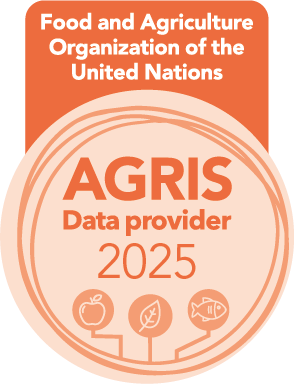Tailoring the Use of Proso Millet in Preparation of Gluten Free Cupcakes
Tailoring Proso Millet in Gluten-Free Cupcakes
DOI:
https://doi.org/10.54393/df.v5i01.123Keywords:
Celiac Disease, Gluten-Free Cupcakes, Proso Millet, Rice Flour, Product DevelopmentAbstract
Celiac disease is the disorder of small intestine. It affects about 1% of the population. To meet dietary requirements of the affected population, the food industry must develop new food items with special health-improving properties. For people who are allergic to gluten, Proso millet is the ideal cereal owing to its gluten-free nature. Objective: To make gluten-free cupcakes using varying concentrations of Proso millet and rice flour. Methods: The gluten content, total phenolic content, and particle size distribution of the raw material were all measured. Next, 100% wheat flour, 80%, 85%, and 90% Proso millet flour, and 20%, 15%, and 10% rice flour were used to make cupcakes. The nutritional makeup of the cupcakes, including their moisture content, ash content, crude fiber, crude fat, crude protein, and mineral (Fe, Zn, Ca, and P) contents, was examined. Results: Based on the results, the optimal ratio of protein and fiber was found to be 90% Proso millet and 10% rice flour. The result for the sensory score of the cupcakes showed that all the treatments were acceptable by the consumer. Conclusions: Although the treatment having high concentration of Proso millet recorded the highest acceptability score. Therefore, Proso millet is useful cereal for any product development.
References
Niewinski MM. Advances in celiac disease and gluten-free diet. Journal of the American Dietetic Association. 2008 Apr; 108(4): 661-72. doi: 10.1016/j.jada.2008.01.011. DOI: https://doi.org/10.1016/j.jada.2008.01.011
Nadhem ON, Azeez G, Smalligan RD, Urban S. Review and practice guidelines for celiac disease in 2014. Postgraduate Medicine. 2015 May; 127(3): 259-65. doi:10.1080/00325481.2015.1015926. DOI: https://doi.org/10.1080/00325481.2015.1015926
Sarwar MH, Sarwar MF, Sarwar M, Qadri NA, Moghal S. The importance of cereals (Poaceae: Gramineae) nutrition in human health: A Review. Journal of Cereals and Oilseeds. 2013 Jun; 4(3): 32-5. doi: 10.5897/JCO12.023. DOI: https://doi.org/10.5897/JCO12.023
McKevith B. Nutritional aspects of cereals. Nutrition Bulletin. 2004 Jun; 29(2): 111-42. doi:10.1111/j.1467-3010.2004.00418. x. DOI: https://doi.org/10.1111/j.1467-3010.2004.00418.x
McSweeney MB, Seetharaman K, Dan Ramdath D, Duizer LM. Chemical and physical characteristics of Proso millet (Panicum miliaceum) ‐based products. Cereal Chemistry. 2017 Mar; 94(2): 357-62. doi:10.1094/CCHEM-07-16-0185-R. DOI: https://doi.org/10.1094/CCHEM-07-16-0185-R
Das S, Khound R, Santra M, Santra DK. Beyond bird feed: Proso millet for human health and environment. Agriculture. 2019 Mar; 9(3): 64. doi: 10.3390/agriculture9030064. DOI: https://doi.org/10.3390/agriculture9030064
Caleja C, Barros L, Antonio AL, Oliveira MB, Ferreira IC. A comparative study between natural and synthetic antioxidants: Evaluation of their performance after incorporation into biscuits. Food Chemistry. 2017 Feb; 216: 342-6. doi: 10.1016/j.foodchem.2016.08.075. DOI: https://doi.org/10.1016/j.foodchem.2016.08.075
Oktriandi E, Nurminah M, Lubis Z. Cupcake from composite flour based on natural local resources (modified breadfruit, purple sweet potato, mocaf, saga seed). In IOP Conference Series: Earth and Environmental Science. 2021 Nov; 912(1): 012036. IOP Publishing. doi: 10.1088/1755-1315/912/1/012036. DOI: https://doi.org/10.1088/1755-1315/912/1/012036
American Association of Cereal Chemists. Approved Methods Committee. Approved methods of the American association of cereal chemists. American Association of Cereal Chemists; 2000.
Kassim NK, Rahmani M, Ismail A, Sukari MA, Ee GC, Nasir NM et al. Antioxidant activity-guided separation of coumarins and lignan from Melicope glabra (Rutaceae). Food Chemistry. 2013 Aug; 139(1-4): 87-92. doi: 10.1016/j.foodchem.2013.01.108. DOI: https://doi.org/10.1016/j.foodchem.2013.01.108
Rebecca LJ, Seshiah C, Sharmila D. Fortification of cupcakes with cereals and pulses. International Journal of Novel Research in Life Sciences. 2016; 3(3): 1-6.
Aboshora W. Association of Official Analytical Chemists. Official Methods of Analysis. 1990.
Düzgün M and Karaman M. Determination and evaluation of quality parameters in cool climate cereals. Theoretical and practical new approaches in cereal science and technology. Ankara: IKSAD Publishing House. 2021: 147-223.
Chandrasekara A, Naczk M, Shahidi F. Effect of processing on the antioxidant activity of millet grains. Food Chemistry. 2012 Jul; 133(1): 1-9. doi: 10.1016/j.foodchem.2011.09.043. DOI: https://doi.org/10.1016/j.foodchem.2011.09.043
Ionescu V, Stoenescu G, Vasilean I, Aprodu I, Banu I. Comparative evaluation of wet gluten quantity and quality through different methods. The Annals of the University Dunarea de Jos of Galati. Fascicle VI-Food Technology. 2010 Nov; 34(2): 49-53.
Sonaye SY and Baxi RN. Particle size measurement and analysis of flour. lung. 2012 May; 2(3).
Mane K and Kadam M. Development and Quality Evaluation of Ragi Supplemented Cupcakes. International Journal of Environment, Agriculture and Biotechnology. 2021; 6(2). doi.org/10.22161/ijeab.62.8. DOI: https://doi.org/10.22161/ijeab.62.8
Aleman RS, Paz G, Morris A, Prinyawiwatkul W, Moncada M, King JM et al. High protein brown rice flour, tapioca starch & potato starch in the development of gluten-free cupcakes. Lebensmittel-Wissenschaft & Technologie. 2021 Dec; 152: 112326. doi: 10.1016/j.lwt.2021.112326. DOI: https://doi.org/10.1016/j.lwt.2021.112326
c NA, Taip FS, Kamal SM, Aziz N. Effects of temperature and airflow on volume development during baking and its influence on quality of cake. Journal of Engineering Science and Technology. 2014 Jun; 9(3): 303-13.
Abdallah MM, Ghanem KM, Abo El-Naga MM, El-Sheshtawy AA, Abd El-Gany TS. Effect of wheat flour supplemented with some seed sprouts flours on cake qualities. Journal of Biological Chemistry and Environmental Sciences. 2017; 12(3): 113-30.
Kim JM, Shin M. Effects of particle size distributions of rice flour on the quality of gluten-free rice cupcakes. Lebensmittel-Wissenschaft & Technologie-Food Science and Technology. 2014 Nov; 59(1): 526-32. doi.org/10.1016/j.lwt.2014.04.042. DOI: https://doi.org/10.1016/j.lwt.2014.04.042
Rebecca LJ, Seshiah C, Sharmila D. Fortification of cupcakes with cereals and pulses. International Journal of Novel Research in Life Sciences. 2016; 3(3): 1-6.
Downloads
Published
Issue
Section
License
Copyright (c) 2024 DIET FACTOR (Journal of Nutritional and Food Sciences)

This work is licensed under a Creative Commons Attribution 4.0 International License.
This is an open-access journal and all the published articles / items are distributed under the terms of the Creative Commons Attribution License, which permits unrestricted use, distribution, and reproduction in any medium, provided the original author and source are credited. For comments








